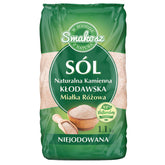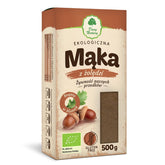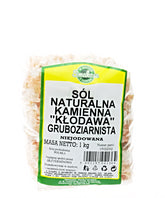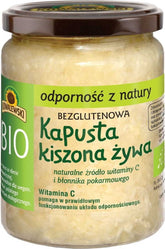Do you choose a “zero” or “light” product?
- zero food
- "Light" - means less
- What will replace the "missing ingredients"?
- What about “zero” products?
- What and with what is replaced in “Light” products?
- Paradox
- summary
Recently, manufacturers are outbidding each other on newer versions of their existing products. Some boast of having fewer calories or less sugar, others proudly admit to getting rid of bad fat, which in their opinion is the healthiest thing, because it is to it that we owe all these diseases and obesity. The answer to the question of what to choose isn't obvious, but to answer it you need to realize what we mean by a "zero" and "light" product.
zero food
Various manufacturers approach this nomenclature in two ways. Most often, however, a product labeled "zero" contains a minimum amount of kcal, which is actually close to zero. It can also mean that a given product does not contain sugar, and if it is a sweetened drink, for example, its main source of energy, i.e. H. calories, actually sugar. There is also a nutritional statement such as "no energy" that is required for products with a maximum of 4 kcal can be used in 100 ml . In fact, if the manufacturer does not add sugar in its new version, that is, the “zero” version, such a product can contain almost no calorific value, which corresponds to its name. Everything is fine here, so on to the "light" products.
"Light" - means less
From the English "light" means light. The name itself suggests that it is fitter and contains fewer calories. Compared to the competition, these products usually do not have "zero" energy content, but only reduced energy. For a product to receive such status, it must have a kcal content that is at least 30% lower than the original product according to European Union standards. This applies to one of the ingredients, i.e. it may have a reduced calorific value, fat or carbohydrate content. Very rarely, however, is this true of protein, where it tends to go the other way. Manufacturers are more proud of increasing the content of this macroelement and dedicating it to people who take care of their condition, muscle mass or lead an active lifestyle.
However, there is a certain relationship between these types of food or drink. It has become common practice that "zero" products are those with no sugar, while "light" refers to those with reduced or no fat. In both cases, the calorific value is significantly lower. Now let's ask another question. Should those carbs and fats be replaced with something? The answer is yes.
What will replace the "missing ingredients"?
The separation of both types of food also applies to the ingredients that are added to them to improve quality, texture, appearance or just taste. Each product contains specific amounts of proteins, fats, carbohydrates and micronutrients such as vitamins and minerals. It is logical that when one of them is reduced or completely removed, the nutritional value and other properties will change.
What about “zero” products?
They are very often accused of being much more "chemical" than their classic counterparts. The situation is not quite as clear as it seems. The best-known products of this type are, of course, sugar-free drinks. This is the largest group, so I will pay a lot of attention to it. The substance that has been stripped from them is sucrose, or sugar. It offered a sweet taste and a caloric value of 4 kcal per gram, so after subtracting that, these drinks have almost zero kcal in 100 milliliters. In addition to sugar, there were various types of colorings, flavor enhancers, preservatives and flavorings (you can find all of them under the E designation). Depending on the type of drink, this composition is different. In order to get a taste similar to the original, the manufacturer filled the missing gap with all sorts of sweeteners and thickeners, otherwise the drink would have a water-like consistency and should still be a worthy successor to a full-fledged mature product.
It's sweeteners that cause the most controversy. They're meant to act as the equivalent of sugar, and each of them tastes slightly different because they vary in sweetness. They can be of natural origin (xylitol, stevia) or synthetic (acesulfame, saccharin, aspartame). Their main advantage is that they can be taken by diabetics due to their very low glycemic index and they are several to several hundred times sweeter than sugar, which significantly reduces the amount required to achieve the desired sweetness. In addition, they have low calorie content and even anti-caries and antibacterial properties.
Phenylketonuria , irritable bowel syndrome and pregnant women should not be consumed due to the fact that they penetrate the placenta. They also have a laxative effect and stimulate the desire to reach for sweet products. It's because of the sweet taste. The brain absorbs it via the sweet taste receptors and prepares itself for the portion of carbohydrates that will hit the stomach. Insulin levels rise, but in the absence of sugar intake, their levels in the blood fall, and as a result, our brain demands an extra portion of calories to increase these levels. The result is a state of increased appetite. It should be borne in mind that each person is susceptible to this effect to a different extent, but it is worth not overdoing it with sweeteners and products containing them. The final downside is their price. We're not just talking about beverages here, but about the desire to replace regular sugar with sweeteners. They are much more expensive and less available.
What and with what is "Light"
products replaced?
Here the situation is more complex. Depending on the product. To unify this, let's focus on dairy. milk first. It is commercially available with different fat content. I am comparing 3.5% milk to 0.5%.
The former contains 64 kcal in 100 grams, or 3.5 grams of fat, 3.3 grams of protein and 4.8 grams of carbohydrates. In contrast, 0.5% milk contains 39 kcal per 100 grams, 0.5 grams of fat, 3.5 grams of protein and 5.1 grams of carbohydrates and much more water. The fat reduction does not go unnoticed in terms of taste either. It is a flavor carrier and the larger amount of water has an additional effect on absorption on the tongue. We can also see an increase in carbohydrates and protein compared to higher fat milk.
Let's get to the yogurt. It is very difficult to maintain the correct structure of the product by removing fats. Milk powder or milk proteins are added to some yoghurts. In this case, of course, it is not harmful to health, provided that we are not lactose intolerant or allergic to these ingredients.
The same goes for cheese. Especially the naturally ripened ones have a lot of fat, so it's not surprising that their "light" versions showed up. A few years after the products were introduced to the food market, scientific studies were started, the results of which should, among other things, serve as guidelines for producers. It turned out that a significant proportion of consumers were concerned that the texture was too gummy, the taste bland and the color unnatural. Various techniques have been introduced to improve defatted products and special substances have been used that help to improve taste perception. Fat mimetics, i.e. their substitutes based on cellulose, maltodextrin, roughage or modified starch, are popular. Their job is to bind water and form a gel, giving products a shape similar to that of fatty ones. It is immediately apparent that these are carbohydrates. In fact, many of these types of products have an increased amount of sugar compared to their originals. However, due to the fact that the amount of one ingredient has been reduced, they can be called “light” products.
Paradox
The fundamental disadvantage of low-energy alternatives is that the word "light“ Only distinguishes a certain group of products that may be different from those Foods that are naturally low in calories are overshadowed , sugar-free and low-fat. Fashion to be fit very often prompts consumers to reach for these products. This sometimes leads to a kind of paradox. It consists in the fact that products with this name are increasingly being chosen and not those that are naturally low in calories, such as vegetables or fruit. A light bar or yoghurt is often more appealing than an apple or cucumber.
summary
According to the motto "everything in moderation for people", "zero" and "Light“ products can be included in the daily diet and even be an interesting way to discover new tastes. The key is moderation and careful reading of labels. Each manufacturer adds slightly different sweeteners or fillers, and it is very important to read the label, especially the composition, which can be radically different when choosing a new product.

















Leave a comment
Please note that comments must be approved before publication.